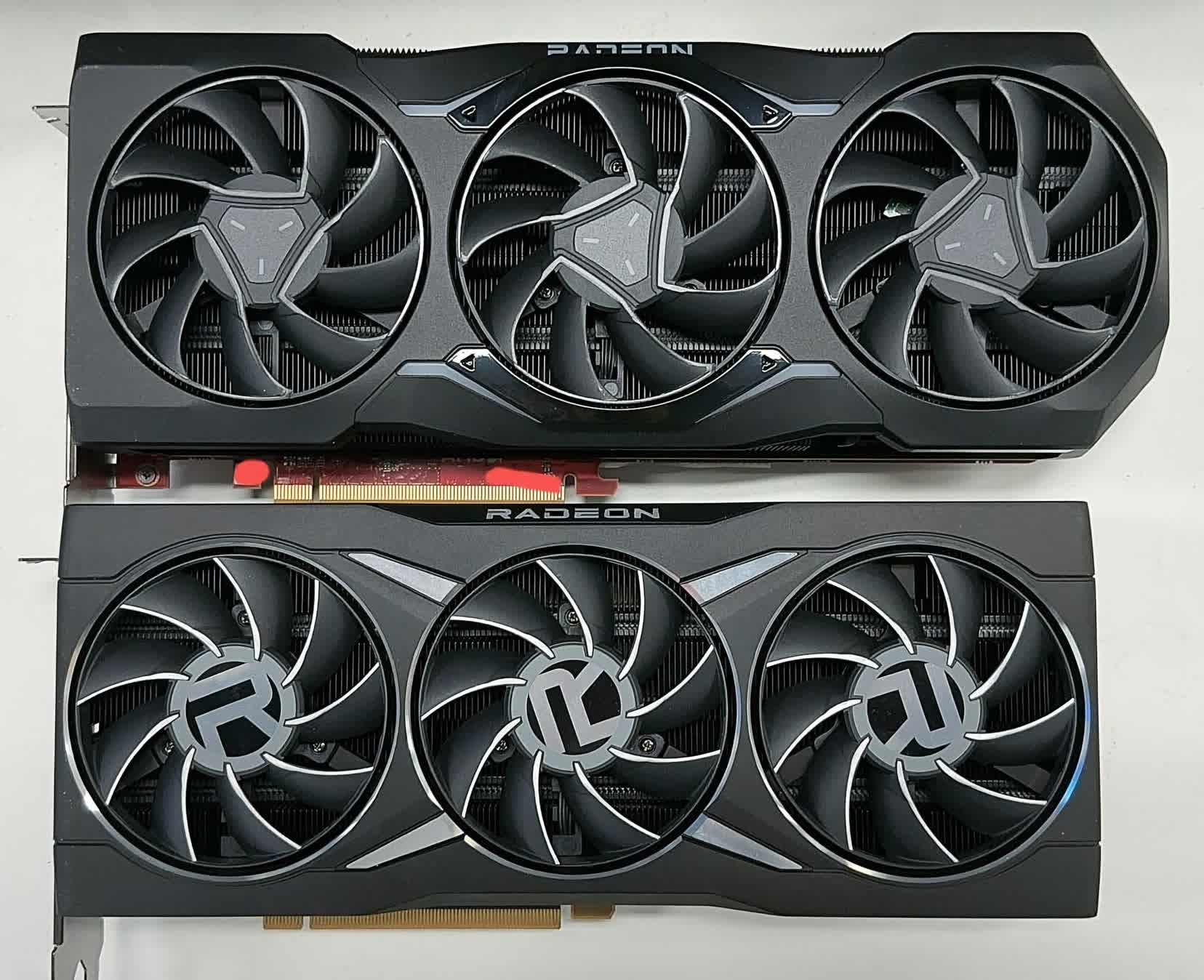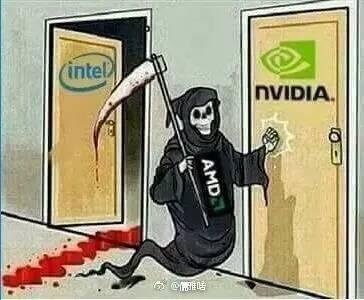What just happened? The first purported images of AMD's upcoming Radeon RX 7000 series graphics card have hit the web courtesy of Twitter leaker HXL. The photos, from a source identified only as QQ (which is a Chinese messaging app), reveal a run-of-the-mill Radeon reference design that looks only marginally larger than the card in the side-by-side (likely an RX 6900 XT).

Tom's Hardware estimates the fans on the mystery card are likely in the 82-83mm range, making them slightly bigger than those on a reference RX 6900 XT.
A second image showing the top of the cards highlights the two eight-pin power connectors. If you recall, AMD recently confirmed upcoming RDNA 3 GPUs would not use the 12VHPWR connector that has been associated with melting RTX 4090 power adapters.
🤫
— HXL (@9550pro) October 31, 2022
Source: QQ pic.twitter.com/FhYix70RXP
The red-striped card is also lacking a PCB backplate and has pins protruding from the rear like those commonly found on engineering samples for development purposes.
If genuine, the images could lend credence to rumors of a TPD in the 350 watt range for the new card. Each eight-pin PCIe cable can supply up to 150 watts and the PCIe slot itself can supply up to an additional 75 watts for a theoretical total of 375 watts. Realistically, a manufacturer will likely err on the side of caution and not aim for the absolute maximum draw.
The flagship Radeon RX 9700 XTX is rumored to pack 12,288 stream processors and a 384-bit memory bus width. It could also feature a dozen 16 Gbit GDDR6 memory chips running at 20 Gbps for a total of 24 GB of VRAM with 960 GB/s of bandwidth.
AMD is set to share more information about its RDNA architecture during a livestream scheduled for November 3 at 1 p.m. Pacific / 4 p.m. Eastern. We'll likely learn all of the pertinent details about the product range, launch models and rollout plans during the event. The latest scuttlebutt suggests AMD could have the first wave of cards ready for retail by the end of November.
https://www.techspot.com/news/96504-amd-radeon-rx-7900-spied-leaked-photos-dual.html
